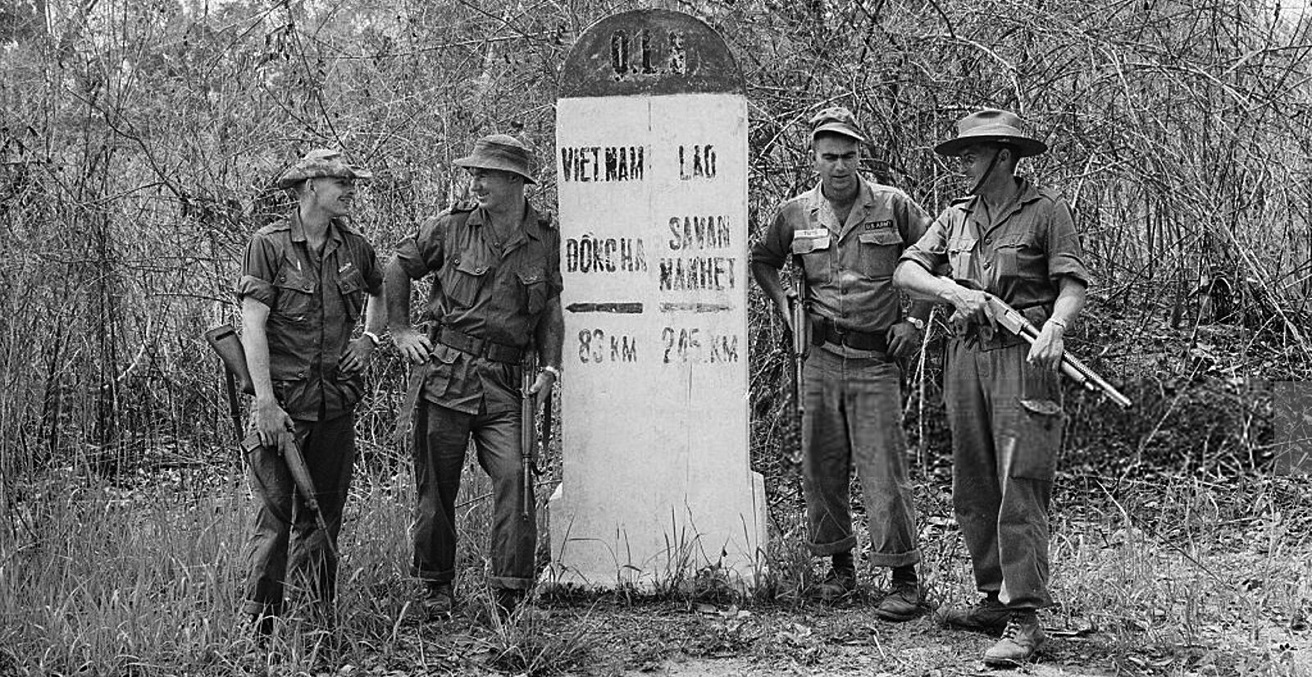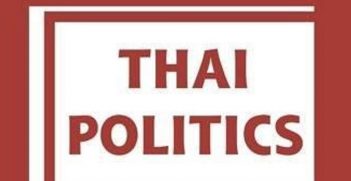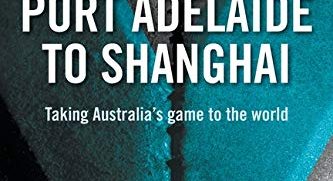Book Review: Ships in the Night – A Vietnam War Story

Greg Dodds’ alternative account of the Vietnam War is a captivating memoire. It is detailed, personal, and provides on-the-ground context to key moments in Vietnam.
Greg Dodds’ career began as a professional Australian soldier who served as an intelligence officer with the Australian Task Force in Vietnam in the late 1960s. In this racy 200-page monograph, Dodds disposes with scholarly requirements – no footnotes, no glossary, no reading list or sources. To appreciate its full context therefore, the reader should have some knowledge of the war, its causes, its leading characters, and its aftermath.
Even without such background however, Ships in the Night – A Vietnam War Story is a good read in itself. Dodds demolishes myths about the freedom-loving South Vietnamese being set upon by bully boys in Hanoi on behalf of Communist superpowers. He contextualises the war against earlier invasions – by Thais, Burmese, Mongols, and Chinese. He describes what became a Vietnamese tradition of fierce resistance, typified by the Hai Ba Trŭng sisters, national heroines who overthrew China’s first domination of Vietnam in AD 40. He observes that the racist arrogance of 19th century French settlers, and their seizure of lands for rubber plantations, lit a fuse of local resentment. The fuse remained alight through the return of the French at the end of the Pacific War and their comprehensive defeat at the hands of the Viet Minh at Dien Bien Phu in May 1954. It burned more strongly throughout what the Vietnamese call “the American War,” finally to explode when North Vietnamese tanks burst through the gates of the presidential palace in Saigon in April 1975.
Dodds gives his personal take on some Vietnamese leaders. Surprisingly, he describes the autocratic, Catholic southern president Ngo Dinh Diem as a “good political thinker.” Dodds is more accurate in describing Ngo’s sister-in-law, Madame Nhu, the Dragon Lady, as a disaster. She fomented enormous resentment in the south by contemptuously describing self-immolating southern bonzes like Thich Tri Quan, as “BBQ parties.” But after the assassination of her husband and brother-in-law, she prophetically told an audience in the United States in the late 1960s, “You Americans enjoy making other people cry, and you make many of us Vietnamese cry today, but you will cry twenty tears for our one. This I promise you.”
Of all the northern leaders, Dodds has most praise for Le Duan. Raised in a poor rural family and then jailed by the French from 1930 to 1945 as a communist agitator, Le Duan enjoyed a meteoric rise to the pinnacle of Vietnamese Communism as Party Secretary in Hanoi in 1960. A genuine believer in collective leadership, Le Duan was responsible, Dodds claims, for galvanising a tiring Ho Chi Minh to go to war against the United States by invading the South in the early 1960s, rather than just providing material assistance to local insurgents.
Dodds reconstructs how he supposes the North prepared for war in the south. How could they avoid the Americans’ massive fire power and airborne mobility? Part of the answer was to deploy camouflaged battalions rather than unwieldly brigades or divisional formations. While these small formations could never match the mobility of American Huey helicopters, they could deploy themselves with remarkable agility – especially if they were very fit, which their commanders insisted they must become through punishing forced marches carrying nothing but water, dried fish, a bag of rice, and their rifles.
Concerning Australia’s involvement in the war, Dodds briefly describes the complex history of Phuoc Tuy, a province close to Saigon in the south-east. It was here in 1966 that the Australian Task Force disengaged itself from its earlier integration with US 173rd Brigade at the massive American military base in Bien Hoa province and established its own tactical area of responsibility (TAOR). Phouc Tuy was a challenging piece of territory – home to “pirates” and “bad hats” in the Long Hai mountains, Viet Cong (VC) units in the Rang Sat swamps, and a substantial community of Catholic refugees from the North in the rice-growing paddy fields. Most supported neither Hanoi nor Saigon, simply wanting to be left alone to pursue farming, fishing, and trading.
Dodds describes conflicting Australian and US military doctrines. Weighed down by too much equipment, well-nourished Americans smelling of cigars and aftershave tended to charge through the jungles supported by the massive fire power they could “call in” from patrolling fighter jets and Huey gunships. Australians preferred to patrol silently in section or platoon strength, hoping to catch the enemy by surprise. It was a tactic developed during the Malayan Emergency from 1948 to 1960, and reinforced at the Canungra jungle training school in Queensland.
Australians, Dodd claims, were more relaxed about confronting the VC than the Americans, especially in the Phuoc Tuy port of Vung Tau, a funnel for much-needed war supplies for both sides. They knew the VC were neighbours, but the two sides tended to live and let live unless the presence of the other became too confronting.
Communications were a continuing problem between Australians and Vietnamese. Major Huy was an earnest English-language scholar who had devoured English literature at university in Hanoi. He was appalled by the banality of conversations he overheard between the downed American flyers he guarded in the notorious Hanoi Hilton prison camp. Transferred with the 1/33 Regiment to Phuoc Tuy in the later stages of the war, Major Huy was frequently puzzled by the chatter he overheard between Australian diggers outside bars in Vung Tau. For their part, some Australians became reasonably fluent in Vietnamese, learned at the RAAF Language School at Point Cook. But they did not understand Vietnamese idioms either.
One narrative put about by the Americans and their allies after the war concerned the vindictiveness of the North Vietnamese in victory. Dodds disputes this, claiming that the North Vietnamese victors did not incarcerate large numbers of the southern population in re-education camps. He alleges that the real figure, although hard to judge, was around 300,000, about 0.01 percent of the southern population, or eight percent of those of military age. Revenge was way down Hanoi’s list of priorities. At the top was Hanoi’s objective to convince the majority of Vietnamese that the war was over and the right people had won. Dodd contrasts Hanoi’s policy with that of the Khmer Rouge in Cambodia, where Pol Pot tried to eliminate the entire urban class.
Do Muoi, a former wharfie from Hai Phong became Le Duan’s successor as Party Secretary General. Accredited as initiating the transition of post-war Vietnam into a vibrant market economy, he lived to see the enormous improvements in Vietnam’s standard of living which followed the end of the war.
The American preference, echoed by the Australians, was to describe their disengagement from Vietnam in 1972/3 as a “withdrawal” rather than a defeat. Dodds disagrees. It was clearly, he asserts, a total defeat, made even more impressive because the North had none of the massive military reinforcements that the South Vietnamese regime were able to draw upon.
Greg’s editorial team, led by Denis Gastin, said that Greg had much more to say in his memoir, but his untimely death in 2020 robbed him of the time and opportunity to do so. It is, nevertheless, a substantial addition to Australian literature on the subject.
This is a review of Greg Dodd’s Ships in the Night – A Vietnam War Story (Denis Gastin and Martin Walsh, 2020). ISBN: 0646830171 & 9780646830179
Richard Broinowski AO is a past president of AIIA NSW and a frequent commentator on public affairs on radio and television. He served in the Australian Embassy in Tehran as a First Secretary in 1971-73, and was later Australian Ambassador to Vietnam, Republic of Korea, Central American Republics and Cuba, and General Manager of Radio Australia.
This article is published under a Creative Commons Licence and may be republished with attribution.





